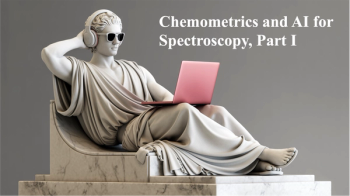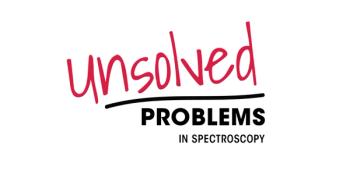
- Application Notebook-09-01-2013
- Volume 28
- Issue 9
Analysis of Potable and Waste Waters by US EPA Method 200.7 Using the Optima 8300 ICP-OES and prepFAST Auto-Dilution/Calibration System
This application brief will give a summary of a more thorough application note (1), which describes the analytical capabilities of Optima? 8300 ICP-OES utilizing low flow conditions, coupled to the prepFAST? in-line, auto-dilution/calibration sample delivery system to determine a suite of environmentally-significant elements in potable and waste waters according to US EPA Method 200.7.
This application brief will give a summary of a more thorough application note (1), which describes the analytical capabilities of Optima® 8300 ICP-OES utilizing low flow conditions, coupled to the prepFAST™ in-line, auto-dilution/calibration sample delivery system to determine a suite of environmentally-significant elements in potable and waste waters according to US EPA Method 200.7.
EPA Method 200.7 (2) covers the use of radial or axial ICP-OES for the determination of 23 metals and some non-metals in potable waters and wastewaters for regulatory compliance. This method contains a lengthy description of procedures for the collection, preservation, and preparation of samples for analysis. The objective of this study was to follow the method using the PerkinElmer® Optima 8300 ICP-OES coupled with the prepFAST™ automated auto-dilution/calibration system (ESI, Omaha, Nebraska). The prepFAST system provides a number of advantages over conventional ICP-OES introduction systems, the most significant being higher sample throughput and reduced memory effects. The system allows accurate, syringe-driven auto dilution of samples and standards, eliminating manual dilution errors and increasing calibration range. By reducing consumption of the sample and high-purity chemical reagents, the prepFAST™ Auto-Dilution/Calibration System is one of the most cost-effective ways of improving laboratory productivity (3).
Experimental
To be compliant with EPA Method 200.7, a number of quality checks must be carried out before sample analysis can be started. Some of these tests include instrument tuning; calibration; performance checks, including interelement correction (IEC); instrument detection limits (IDL); method detection limits (MDL); quality control (QC) samples; linear dynamic range (LDR); and method blanks and spike recoveries. The instrument was set up with the operating conditions shown in Table I using the recommended wavelengths and background correction points described in the method. For some analytes, multiple wavelengths were used, based on sensitivity and/or freedom from interference. It should also be emphasized that a plasma flow rate of 8 L/min was used for this analysis, which is typically 50% lower than other ICP-OES systems.
Table I
Calibration
The majority of solutions prepared for this study were diluted in 2% nitric acid. For calibration, a 1 mg/L and a 5 mg/L standard were prepared and the prepFAST system was used to automatically dilute these solutions to prepare other calibration standards and blanks. The prepFAST system was also set up to automatically dilute samples, some of which were deliberately prepared over the range of the calibration curve, so it would automatically carry out a sample dilution. Yttrium was used as the internal standard for the analysis of all samples.
Results
It is not possible to show the complete set of sample and QA/QC data in this application brief. However, to emphasize the accuracy of the dilutions carried out by the prepFAST, Table II shows sample analysis data for the recovery of the initial calibration verification (ICV) solution (referenced to 10x user-prepared dilution) with further prepFAST dilutions at 10x or 100x, when necessary. It can be clearly seen that the recoveries of all analytes are well within the EPA guidelines of 85–115%. For the complete set of sample results generated in this study, please refer to the published application note (1).
Table II
Conclusion
This study has demonstrated the capabilities of the PerkinElmer Optima 8300 ICP-OES coupled with the prepFAST™ system to produce results that meet the rigorous requirements outlined in US EPA Method 200.7 for the analysis of potable and waste waters. The accuracy and precision of the instrument allows less time to be spent on meeting the performance requirements. The prepFAST™ system simplifies sample preparation, allowing higher sample throughput, reducing memory effects, and minimizing errors and contamination.
References
(1) D.K. Bradshaw and L. Thompson, "The Analysis of Water and Wastes by U.S. EPA Method 200.7 Using the Optima 8300 ICP-OES and prepFAST Auto-Dilution/ Calibration System," PerkinElmer Inc. Application Note, 2013.
(2) EPA Method 200.7 Revision 4.4, "Determination of Metals and Trace Elements in Water and Wastes by ICP-AES."
(3) "PrepFAST On-line Auto-dilution and Auto-calibration Sample Delivery System: Elemental Scientific Inc." Application Note,
PerkinElmer, Inc.
940 Winter Street, Waltham, MA 02451
tel. (800) 762-4000 or (203) 925-4602
Website:
Articles in this issue
over 12 years ago
Direct Mercury Analysis of Gaseous Samples Using Sorbent Tubesover 12 years ago
Specular Reflectance Spectroscopy with Viewingover 12 years ago
Elemental Analysis Through a Plastic Barrierover 12 years ago
Wire Grid Polarizers for IR Spectroscopyover 12 years ago
Improving Trace Metals Data Quality Through In-Lab Acid PurificationNewsletter
Get essential updates on the latest spectroscopy technologies, regulatory standards, and best practices—subscribe today to Spectroscopy.




